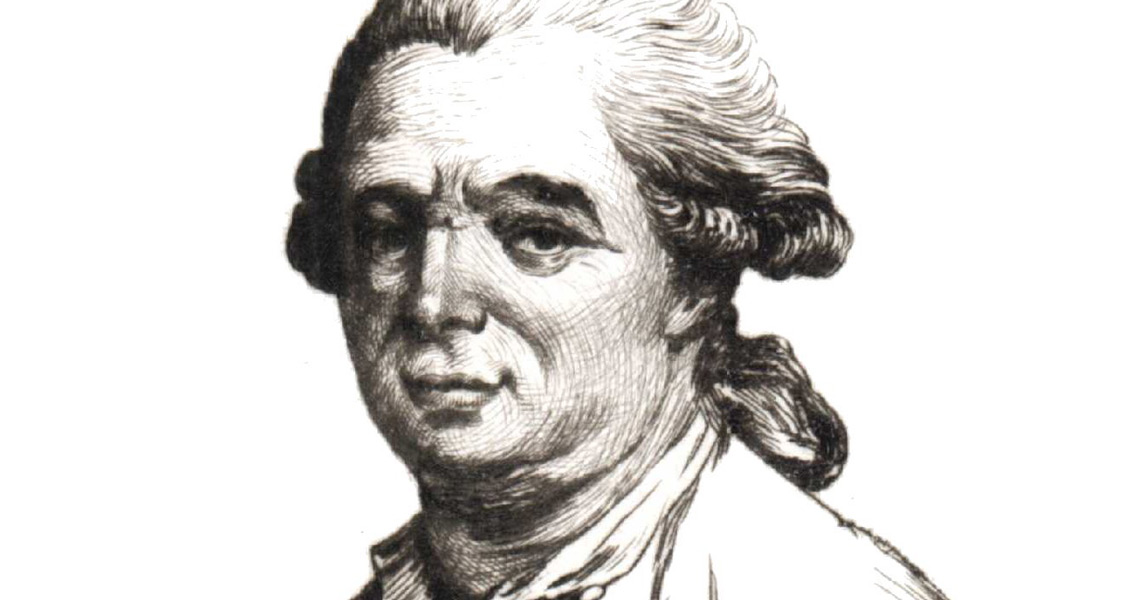<![CDATA[A pioneer in hypnotic therapy, Franz Anton Mesmer passed away on 5th March 1815, in Meersburg, Swabia. Many of Mesmer's theories and treatments were crucial forerunners to modern therapeutic hypnotism, and yet he died in obscurity, labelled a fraud in both France and Austria. Mesmer didn't invent hypnotism. Hypnosis and trance like states are fundamental human traits. Texts from Ancient Egypt, Greece and China all describe situations where trances were deliberately induced in people, often as part of religious rites or rituals. The term hypnotism was coined by a British scientist named James Braid in the eighteenth century, the name a reference to the Ancient Greek god of sleep, Hypnos. The origins of modern therapeutic hypnotism though, can be traced back to the system Mesmer created and which is named in his honour, mesmerism. Whether he truly understood what he'd unearthed however, is far from clear. Born in 1734 near Lake Boden, Germany, Mesmer went on to study theology, philosophy and law in Vienna before changing his focus to medicine. In the 1770s he came across a renowned faith healer, a Swiss Roman Catholic priest named Father Glassner. Obsessed by Glassner's seemingly supernatural ability to heal people, Mesmer set about developing a scientific explanation for it. In his 1766 dissertation, Mesmer had expanded on the work of British physician Richard Mead, suggesting that human health was dictated by celestial bodies. In particular, he argued that an invisible fluid in the human body was controlled by the gravitational pull of the planets in our solar system, the movements of the planets thus impacting on our well being. By reconciling this theory of 'animal gravitation' with what he witnessed at Glassner's healing sessions, Mesmer forged his theory of 'animal magnetism'. Mesmer hypothesised that the invisible fluid in the body followed the laws of magnetism. Moving on from this, he postulated that this animal magnetism could be controlled by any magnetic object and therefore manipulated by any trained person. He believed that an understanding of animal magnetism could be used to treat disease. Working on the assumption that diseases were the result of obstructions to the flow of the invisible fluid around the body, he reasoned that by entering a patient into a trance state the obstacles to the free flow of the liquid could be broken, restoring 'harmony' to the personal fluid flow. The theory of animal magnetism has been widely discredited, yet the therapeutic techniques Mesmer devised were hugely influential, such as soothing music as a means of inducing hypnosis, and group healing sessions. His scientific theories to explain the results of his treatments may have been wrong, but the hypnotic states induced in patients through his mesmerism techniques were having remarkable results. Although he operated a successful medical practice for several years, Mesmer was eventually declared a fraud by the Viennese medical council. Unable to practice in the city, he moved to the more liberal culture of Paris. Again, Mesmer established a lucrative practice, and again he came into conflict with the more established medical institutions. He treated aristocrats and peasants for a variety of ailments, developing a taste for showmanship in his treatments which likely only served to increase the hostility of the medical profession towards him. Attention grew around Mesmer, affording him celebrity status but also bringing him under greater scrutiny. In 1784, King Louis XVI formed a committee to investigate Mesmer's work. It was made up of some of the most renowned scientists and academics of the period, including Benjamin Franklin and Antoine-Laurent Lavoisier, and was charged with analysing the scientific validity of Mesmer's techniques. It quickly concluded that the animal magnetism theory had no basis in science, a key example being Mesmer's use of 'magnetic trees' to cure patients. The members of the commission pointed out that patients were cured by touching non-magnetic trees as well as magnetic ones, and Mesmer was labelled a fraud for the second time in his life. His practice declined, and Mesmer faded into relative obscurity following the commission's conclusions. Disproving his theory on animal magnetism, the medical professionals of the time failed to explain why his techniques still seemed to work in practice, particularly when treating nervous disorders. Years later, Mesmer's followers would expand on his insights, leading to the development of the legitimate application of hypnosis. ]]>
Hypnosis Therapy Pioneer Mesmer Dies 'A Fraud'
